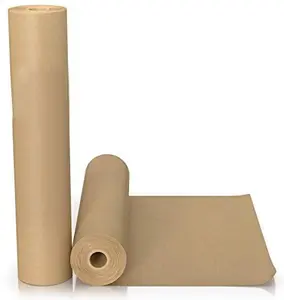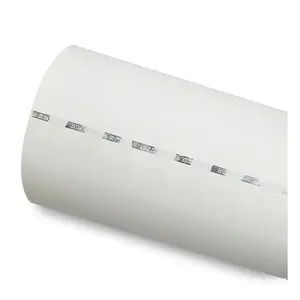The term banknote cotton paper refers to a bespoke variety of paper engineered for currency production. Renowned for its robustness, unique tactile quality, and integrated security measures, these features are vital in deterring forgery. Banknote cotton paper is generally composed of a cotton and linen mix, endowing it with a distinct texture and resilience that differentiates it from standard paper. Alibaba.com offers businesses a range of banknote cotton paper selections, customizable to their specific security and aesthetic requirements.
Types of Banknote Cotton Paper
Various banknote cotton paper types are available to meet different security standards and design tastes. Some papers are embedded with UV invisible fibers, detectable only under ultraviolet light, adding an extra security dimension. Others may feature holographic strips that bolster security while also augmenting the currency's visual allure. The cotton to linen ratio may differ as well, with some opting for a 75% cotton to 25% linen mix, striking an ideal balance between toughness and a signature feel. These options enable financial entities to select a paper variant that resonates with their unique security needs and brand ethos.
Structure of Banknote Cotton Paper
The intricate structure of banknote cotton paper is a testament to anti-counterfeiting engineering. At its foundation, the paper is a dense weave of cotton and linen fibers, providing exceptional strength and longevity. Security threads, often with metallic or holographic features, are interlaced within the paper, appearing as a solid line or segmented dashes when illuminated. Watermarks, integral to the paper's structure, are crafted by varying the paper's thickness to produce an image that emerges when backlit. These structural elements are harmonized to validate the currency's legitimacy and to deliver a tactile sensation that is verifiable by machines and trusted by humans.
Materials and Their Properties
The selection of materials for banknote cotton paper is intentional, aiming to deliver a product that is secure, enduring, and eco-conscious. Cotton lends the paper a robust yet supple base, resistant to tearing and deterioration. Linen contributes additional strength and imparts a unique texture to the paper. These organic fibers are favored over wood pulp due to their durability and resistance to disintegration through use. The environmental aspect of these materials is paramount, aligning with worldwide initiatives to minimize ecological impact, thus positioning cotton and linen as the preferred materials for sustainable currency production.
Business Usages and Applications
Banknote cotton paper is employed in various commercial contexts where security and durability are critical. Luxury retailers utilize this paper for gift certificates, ensuring genuineness and an upscale touch. Legal and governmental documents also employ this paper to avert falsification. In the realm of art, authenticity certificates for artworks and collectibles are frequently printed on banknote cotton paper to denote value and authenticity. These uses underscore the confidence in the material's capacity to safeguard security and preserve integrity over time.
Functions of Banknote Cotton Paper
The fundamental role of banknote cotton paper is to serve as a trustworthy medium for monetary transactions. It is crafted to endure the wear and tear of daily use, resist moisture and impurities, and remain intact for extended periods in circulation. The integrated security features are designed to validate genuine notes and aid in identifying forgeries. Moreover, these papers play a pivotal role in shaping a nation's currency identity, featuring elaborate designs that reflect cultural heritage and national pride.
Features of Banknote Cotton Paper
The hallmark traits of banknote cotton paper encompass watermarking, security threads, and the capacity to integrate diverse security fibers and holographic elements. These attributes are not merely practical; they are intricately designed to be nearly inimitable without specialized machinery and know-how. The paper's allure lies in its fusion of a luxurious feel, superior durability, and cutting-edge security technologies, distinguishing it from other security papers in the marketplace.
Benefits of Banknote Cotton Paper
The advantages of utilizing banknote cotton paper are multifaceted. For central banks and governmental bodies, it offers a secure and economical approach to currency printing, diminishing the threat of counterfeiting. For commercial entities, it provides a medium to convey worth and reliability through certificates, vouchers, and other significant documents. For consumers, it instills confidence in the legitimacy of the currency they handle daily. Additionally, this paper contributes to environmental conservation, being more sustainable and recyclable than synthetic alternatives.
How to Use and Maintain Banknote Cotton Paper
Optimal use of banknote cotton paper necessitates an appreciation of its strengths and limitations. Handling the paper with clean hands and storing it in a moisture-free, secure setting can extend its service life. Regarding maintenance, it is crucial to avoid high humidity, which can activate the security features and compromise the paper's integrity. For businesses, educating staff to recognize the paper's distinctive features is essential in fraud prevention and preserving the value of documents printed on it.
How to Choose the Right Banknote Cotton Paper
Choosing the appropriate banknote cotton paper hinges on the specific requirements of the business or institution. Considerations should include the necessary level of security, the intended application of the paper, and the preferred tactile and visual qualities. Suppliers on Alibaba.com can offer insights into the most suitable paper type for various uses, whether for high-security banknotes or for premium business documents that necessitate a certain level of authenticity and resilience.
Target Audience and Their Preferences
The intended clientele for banknote cotton paper comprises central banks, governmental agencies, upscale retailers, and businesses in need of secure, robust paper for their operations. These groups favor banknote cotton paper for its protective features, durability, and the cachet associated with its usage. The paper's adaptability to meet specific security and aesthetic demands renders it particularly attractive to this discerning demographic.
How does banknote cotton paper enhance the security of currency?
Currency security is bolstered by the inherent properties of banknote cotton paper. The paper's integration of various security elements such as watermarks, security threads, and specialized fibers constitutes a formidable defense against counterfeiting. These features are intricately incorporated into the paper's fabric, rendering replication an exceedingly complex and virtually unattainable feat for forgers. Alibaba.com provides an assortment of papers that incorporate these essential security features.
What are the environmental benefits of using cotton banknotes?
Employing cotton banknotes confers multiple ecological advantages. The materials used are typically renewable and decomposable, lessening the environmental footprint associated with the currency's lifecycle. Furthermore, the longevity of cotton fiber paper money translates to a more extended circulation period, thereby reducing the frequency of printing and conserving resources. Alibaba.com showcases banknote paper that upholds these environmental merits without compromising quality or security.
How can businesses customize their banknote cotton paper orders on Alibaba.com?
Enterprises can tailor their banknote cotton paper orders on Alibaba.com by selecting from a spectrum of security features, paper varieties, and print compatibilities. The platform's suppliers can customize the paper to meet precise security specifications, including bespoke watermarks, thread inclusions, and fiber enhancements. Moreover, businesses can dictate the paper's dimensions, thickness, and pulp composition to ensure the end product aligns with their exact requirements for currency or upscale packaging solutions.






































 浙公网安备 33010002000092号
浙公网安备 33010002000092号 浙B2-20120091-4
浙B2-20120091-4